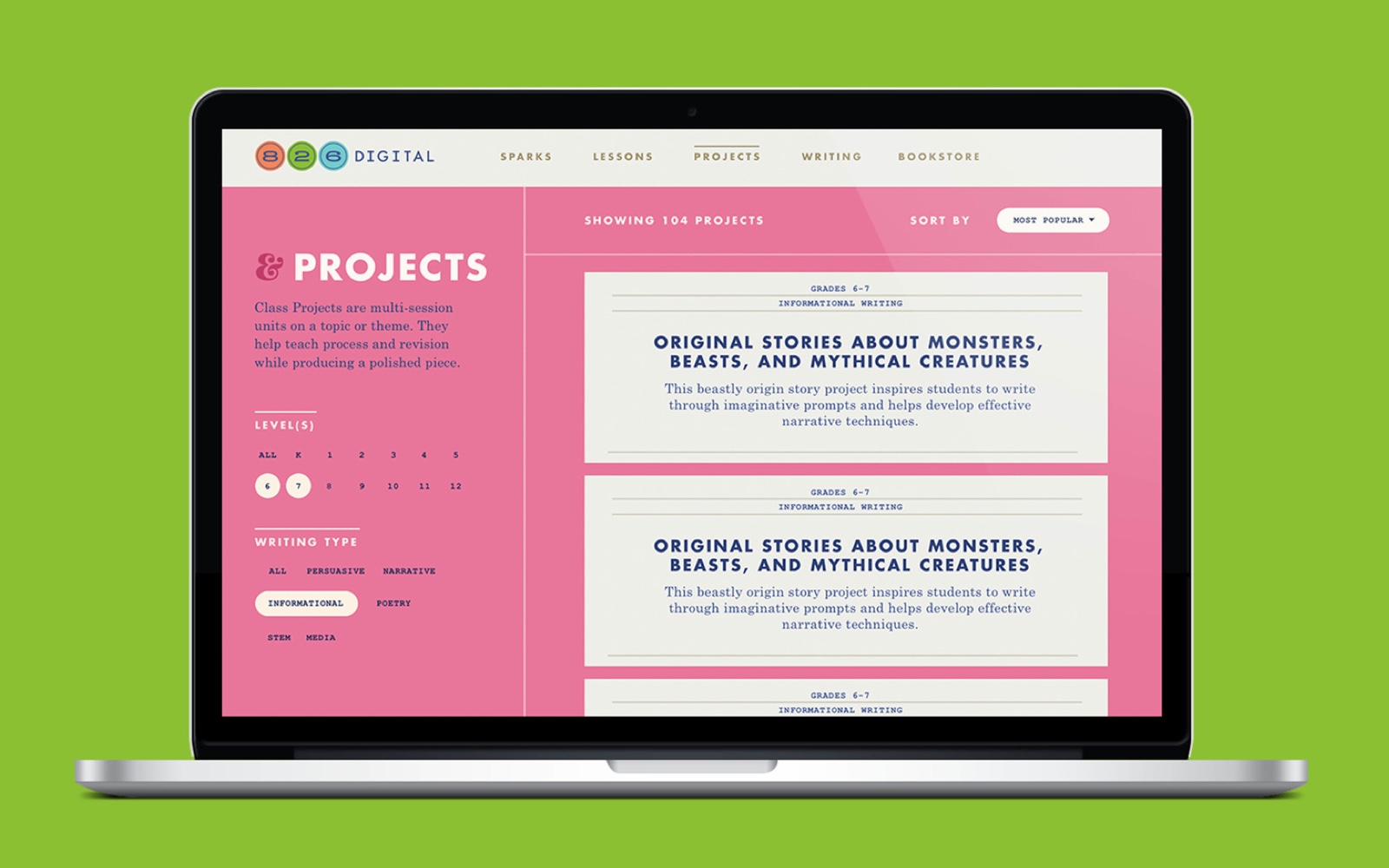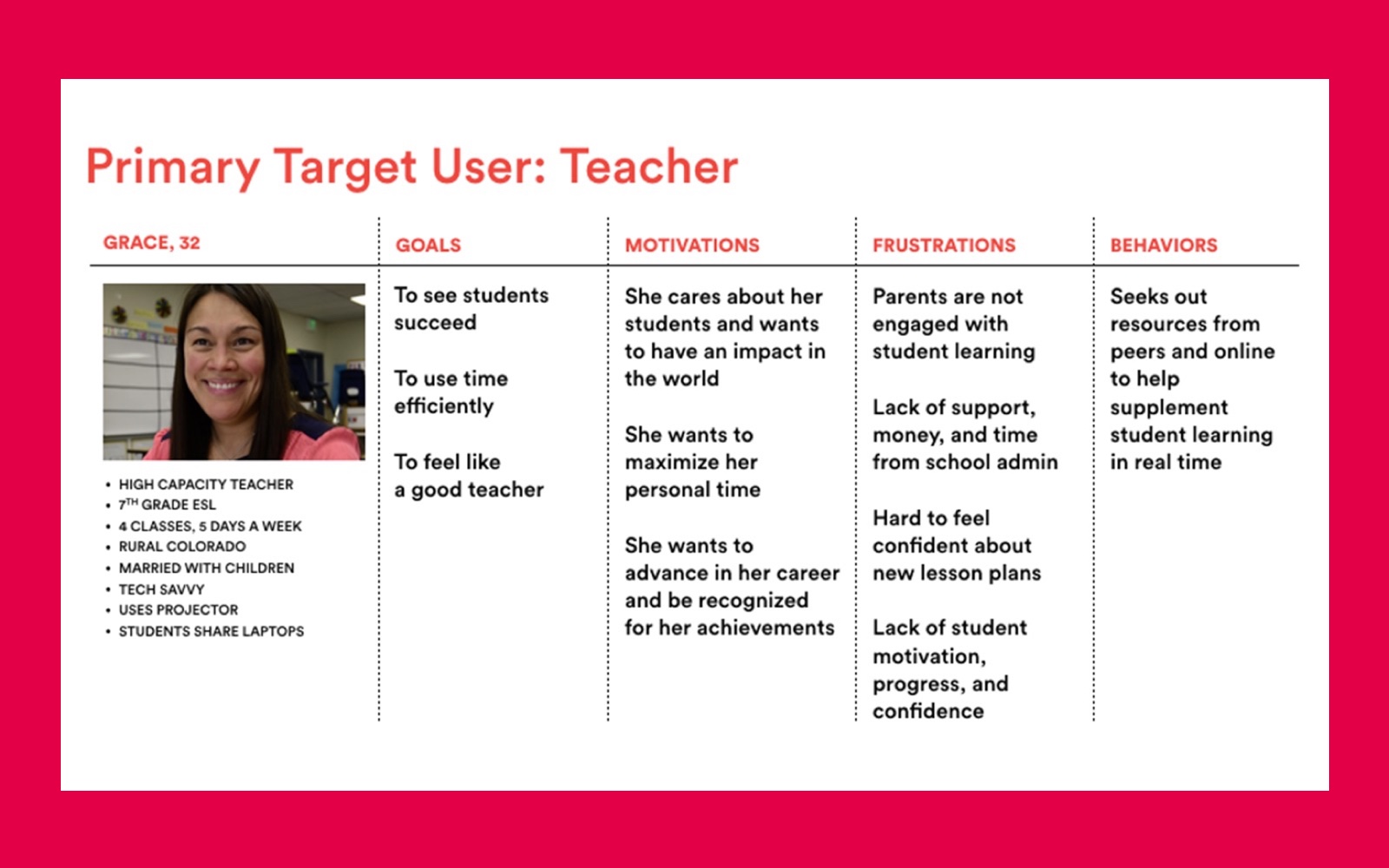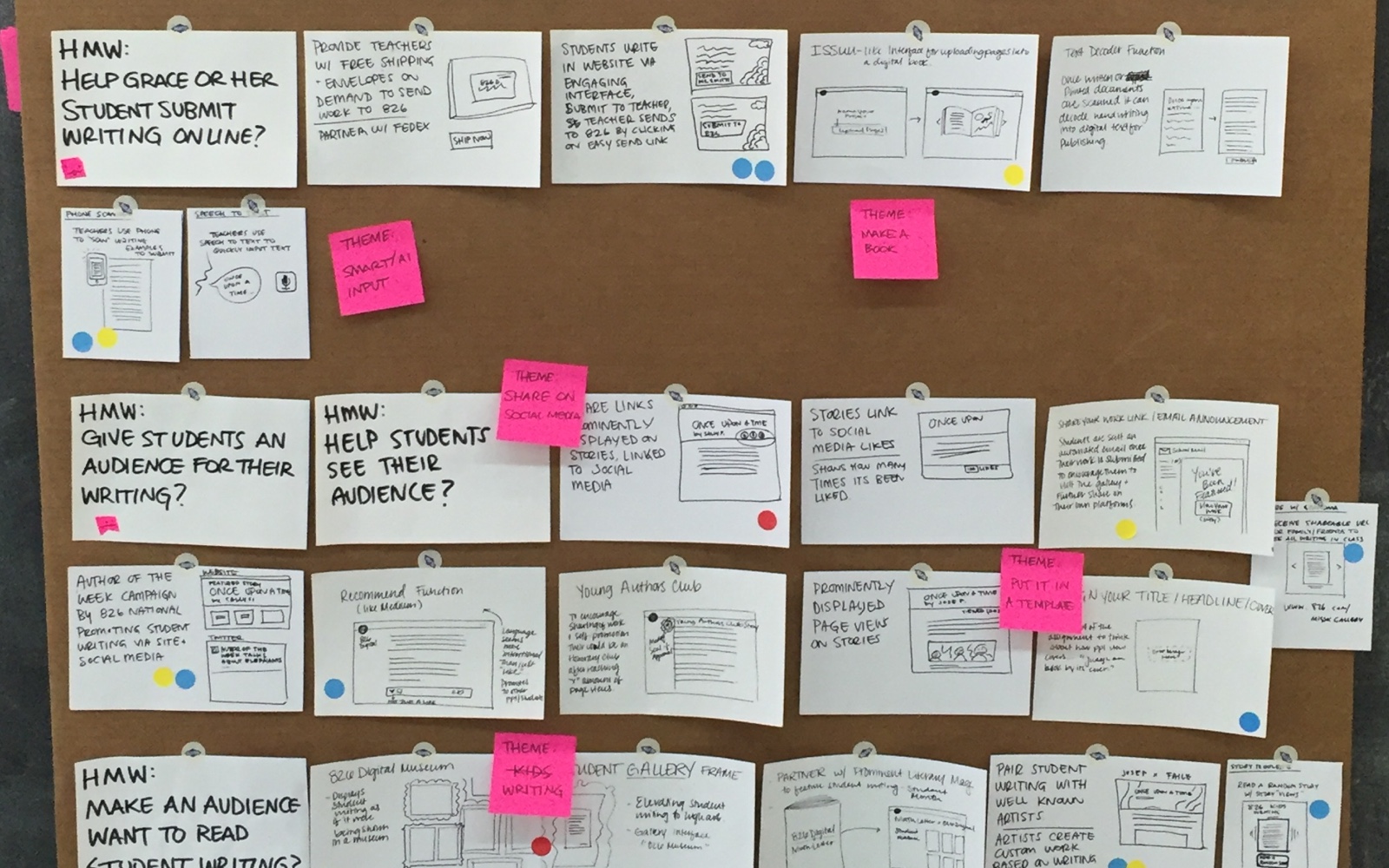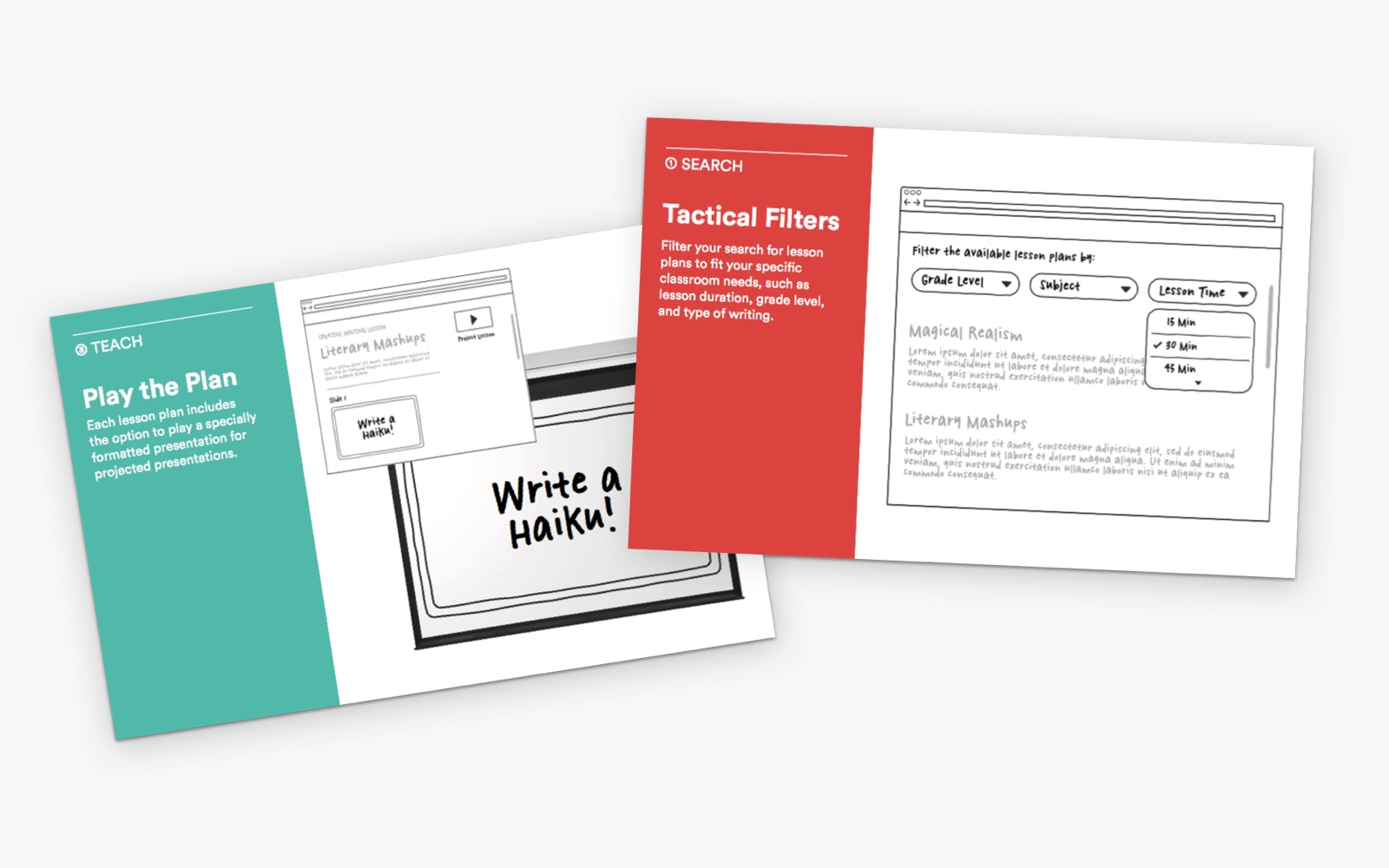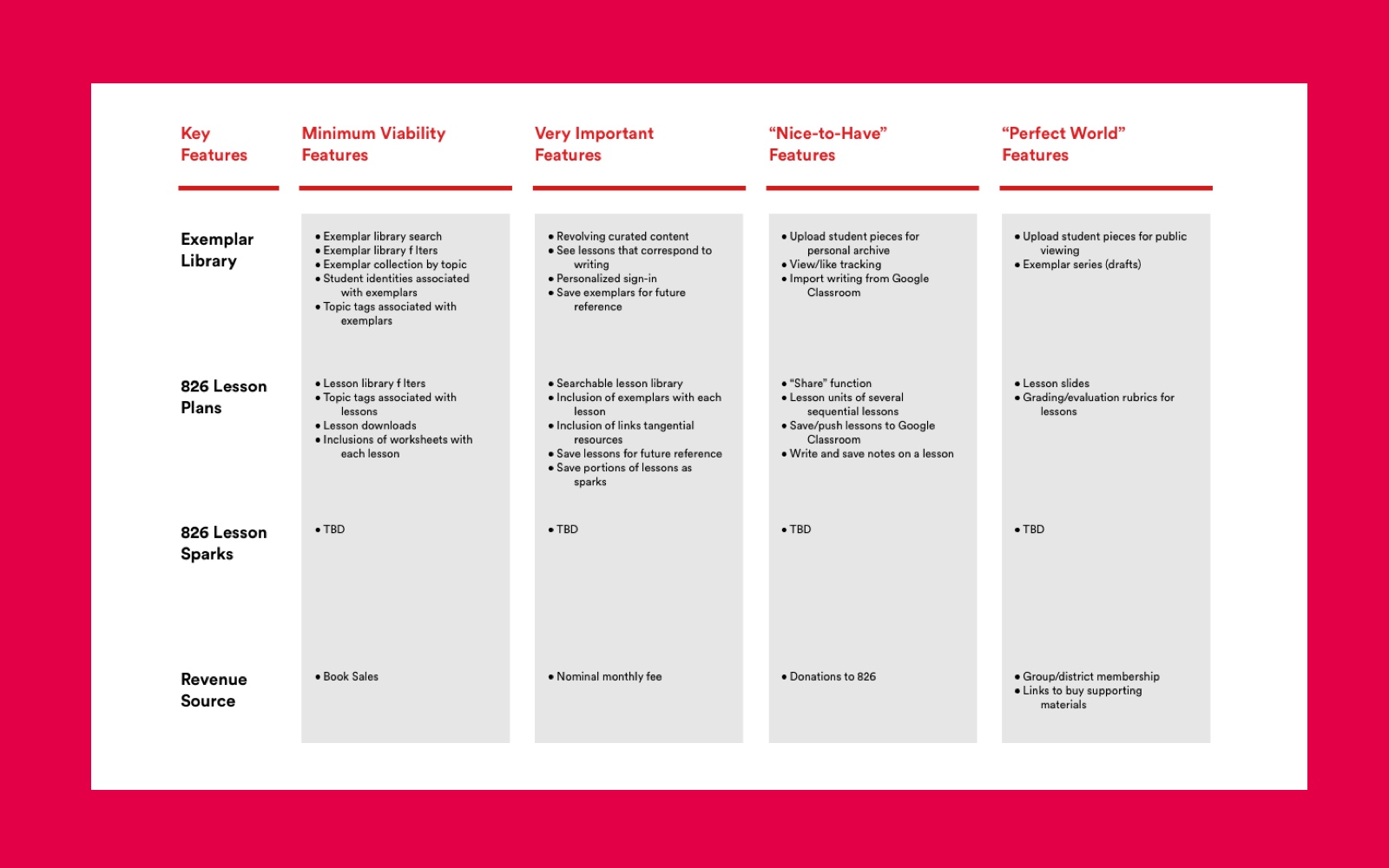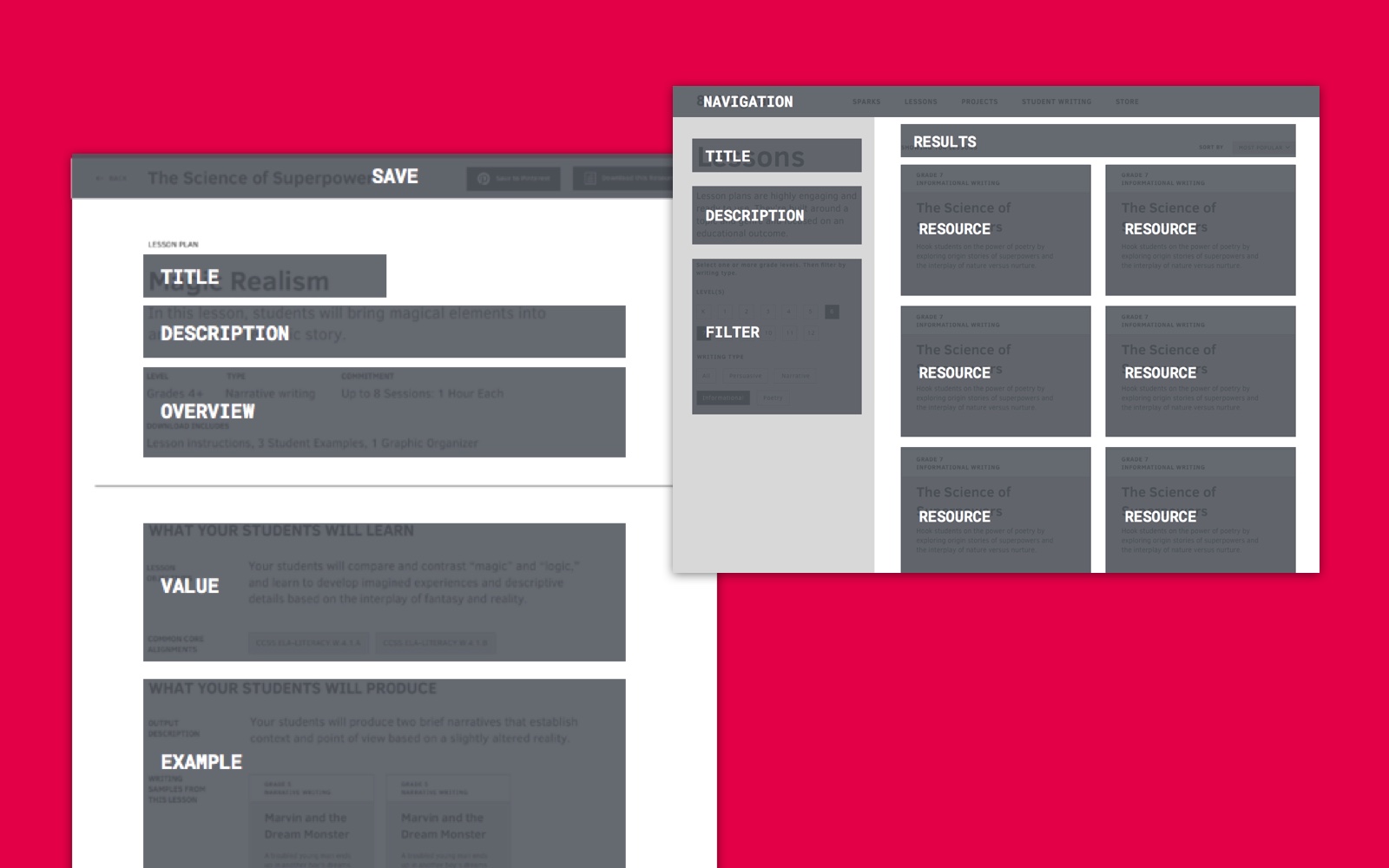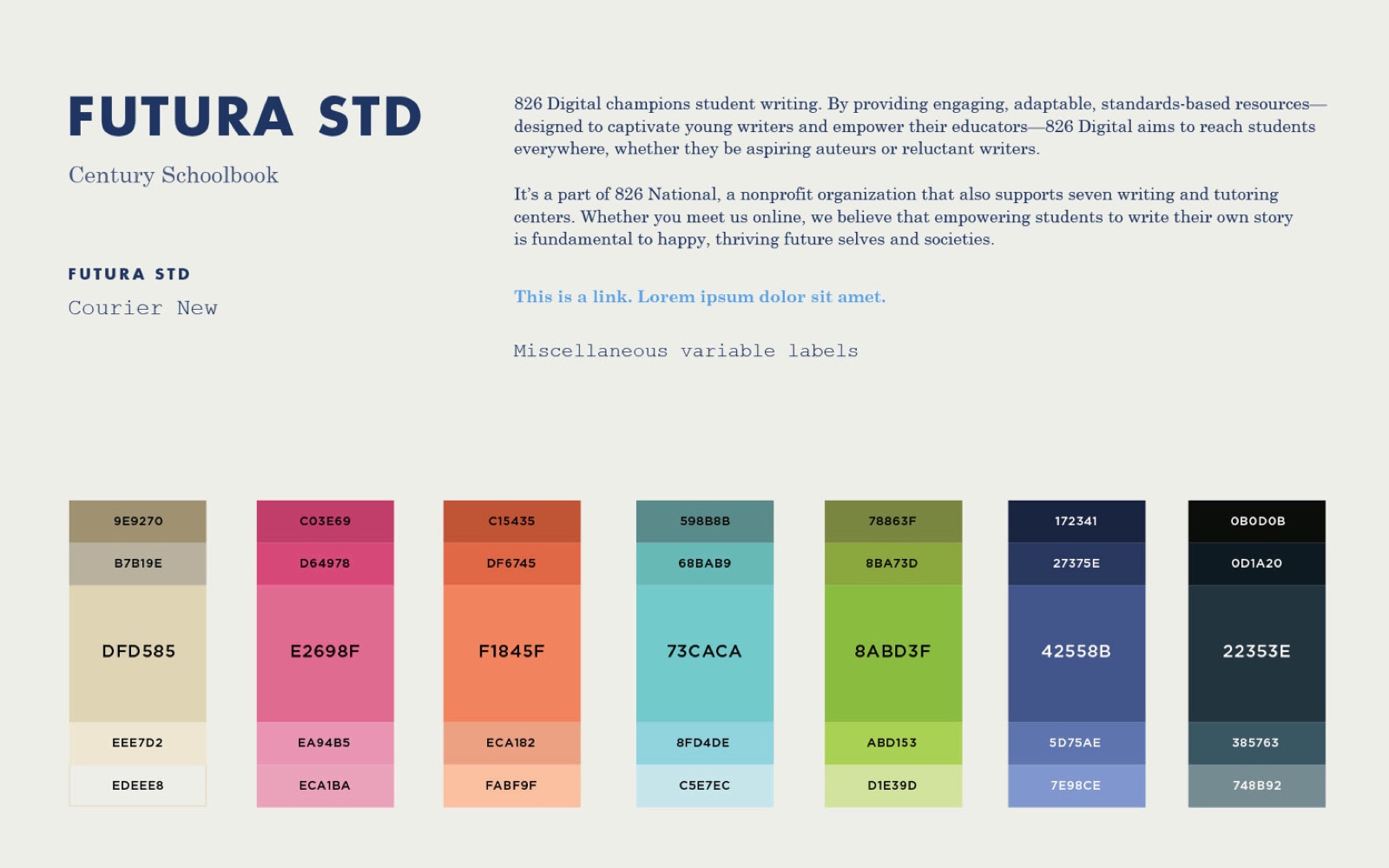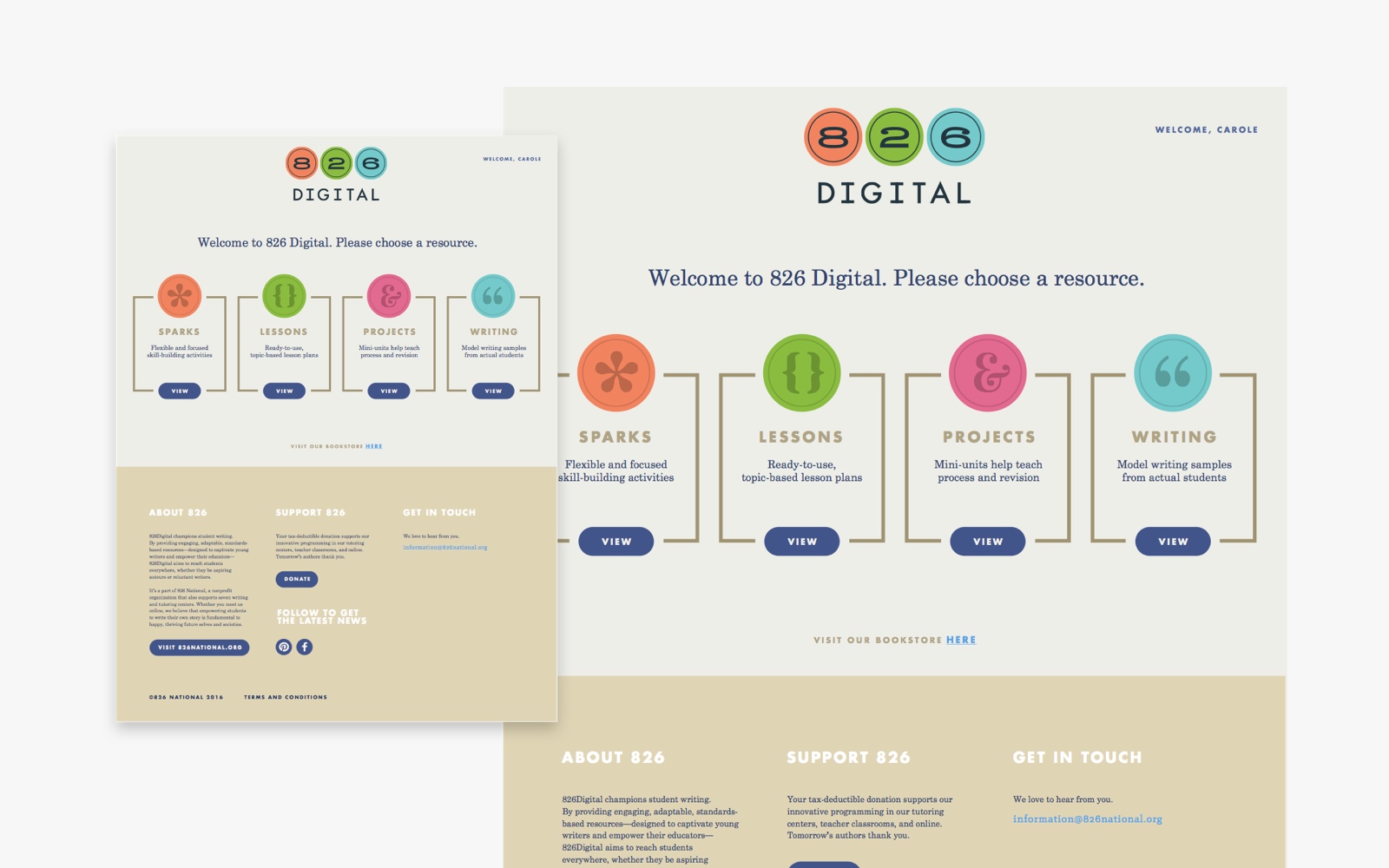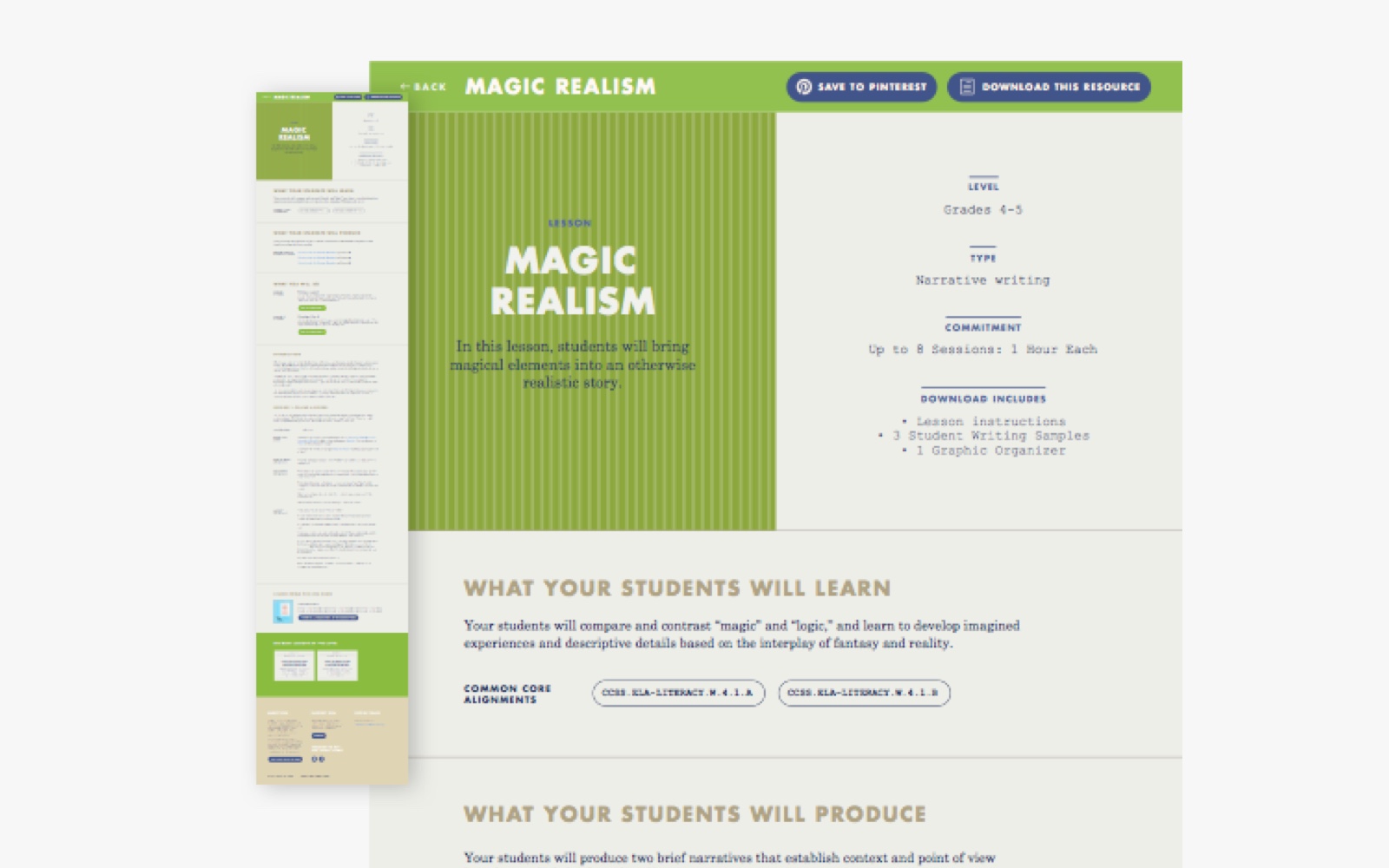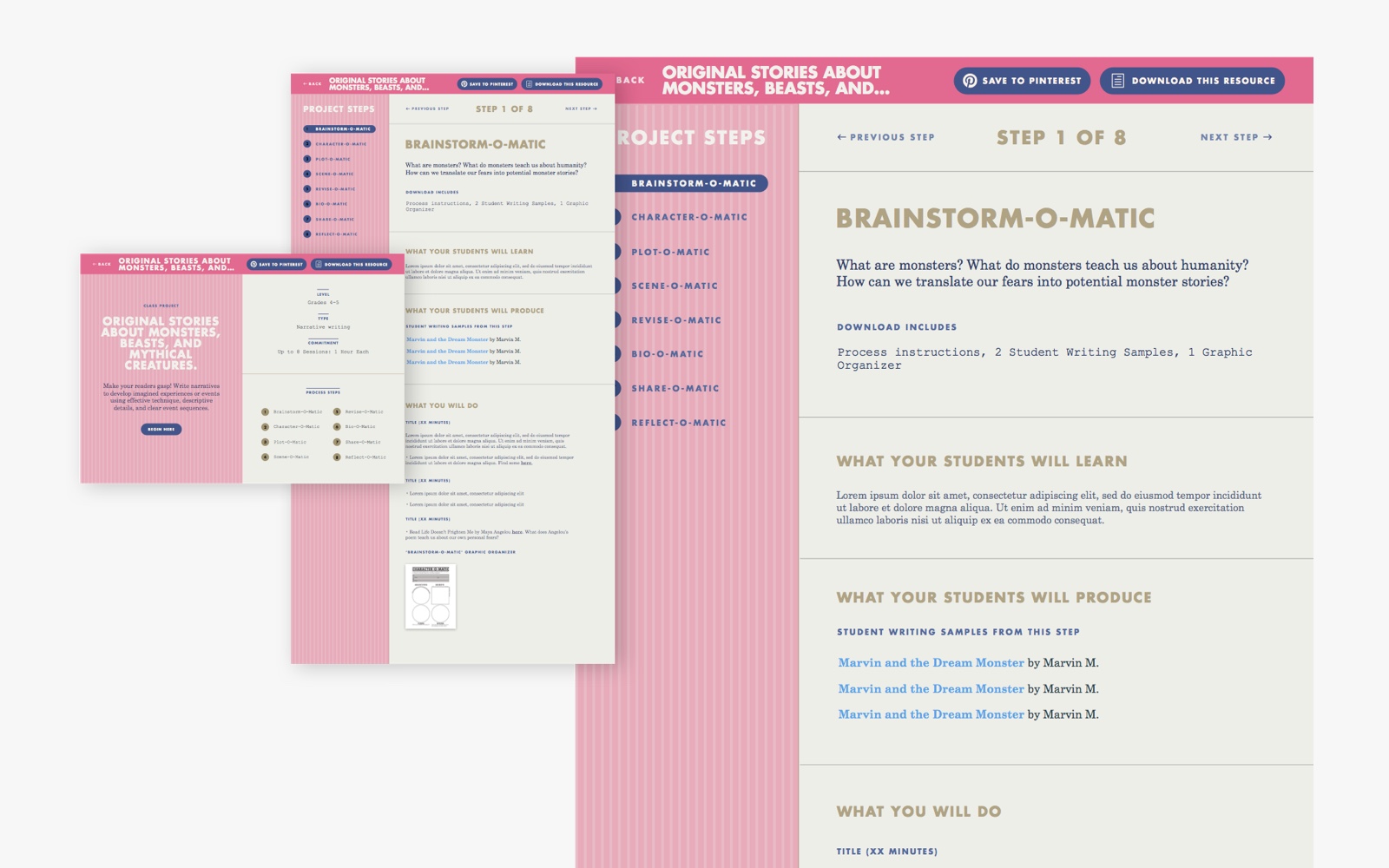Case Study - 826 Digital
Designing Smarter Online Resources for Educators
Helping expand reach of the 826 organization by making their content available online
Client
826 National
Studio
Greater Good Studio
Team
Elaine
Sara
Me
My Role
UX research,
UX strategy,
Content Strategy,
Information Architecture,
Interaction Design,
Rapid Prototyping,
Validation Testing
Visual Design
Challenge
Design a platform that will enable the 826 organization to reach more kids by creating an online platform that educators can use to adopt 826’s uniquely engaging teaching materials, and design that platform to stand out in the already crowded education category.
Result
A website concept prototyped and refined with the feedback of over 20 educators that acknowledges their unique challenges and helps fulfill several of their unmet needs with brand new features and types of content
Background
826 National is an non-profit organization dedicated to helping and inspiring largely underprivileged kids to write. They operate out of seven storefronts located in seven major urban centers around the country. In those centers, they offer free tutoring and writing workshops and field trips that deliver super engaging and effective educational experiences to kids in order to achieve their mission.
They currently provide services to about 30,000 kids each year. 826 National wants to double the number kids they can reach each year to 60,000, but because they provide their services in person, their ability to reach students has been largely limited due to the size and locations of their centers. 826 National has a plan to share their uniquely engaging teaching materials with educators who could then use those materials in their own classrooms, reaching many more kids through each single teacher. In order to reach educators in any location, 826 National recognized the need to bring their unique teaching materials online.
Our client, 826 National, collaborated with our team to help explore and design the online experience for school educators, our target user.
Approach
We outlined a process that would involve building empathy for our users and following through by speaking to typical target user frequently throughout our process. Those conversations happened as we gathered information and then again later as we vetted our content and solution prototypes to ensure it was relevant and desirable.
Using previous research, we were defined a typical target user who we referred to as ‘Grace.’ She would be the test that we would measure decisions against to ensure our solutions remained user centered.
In previous research, we also learned that teachers experience a disproportionate number of pain points in their classrooms as they struggle to do their jobs every day. We made assumptions about the most extreme needs of teachers and asked “How might we…?” questions that inspired 28 concepts and designed a research activity that organized those concepts into sequential steps. These concepts served as sacrificial prompts that our users could rate according to preference. This helped us understand when and where we could be most helpful to our users. We tested these concepts with five educators, as well as asking questions to gauge the quality of the supplied content.
What teachers need is not what we had initially expected. Their teaching process looks different and we were surprised to learn that there really is no one-size-fits-all solution for our them.
In previous research, we also learned that teachers experience a disproportionate number of pain points in their classrooms as they struggle to do their jobs every day. We made assumptions about the most extreme needs of teachers and asked “How might we…?” questions that inspired 28 concepts and designed a research activity that organized those concepts into sequential steps. These concepts served as sacrificial prompts that our users could rate according to preference. This helped us understand when and where we could be most helpful to our users. We tested these concepts with five educators, as well as asking questions to gauge the quality of the supplied content.
Solution
Our solution incorporated insights gathered after over 20 participants had helped us define and refine our initial concepts and assumptions. What resulted was a solution that acknowledges the end users' unique challenges and helps fulfill several of their unmet needs, and in an attractive package that is as engaging as the content that it holds.
We leveraged an important insight as we developed a visual direction, that the content that teachers look for must be engaging to them in order for them to believe that it will also be engaging for their students.
Conclusion
In the end, our testing participants were asking when this new solution would be available. They wanted to use it! The partners that were chosen to develop the solution were extremely pleased with our documentation, and the client stakeholders were more than happy with our performance as a studio and our diligence to build something that would be valuable to the end users.
